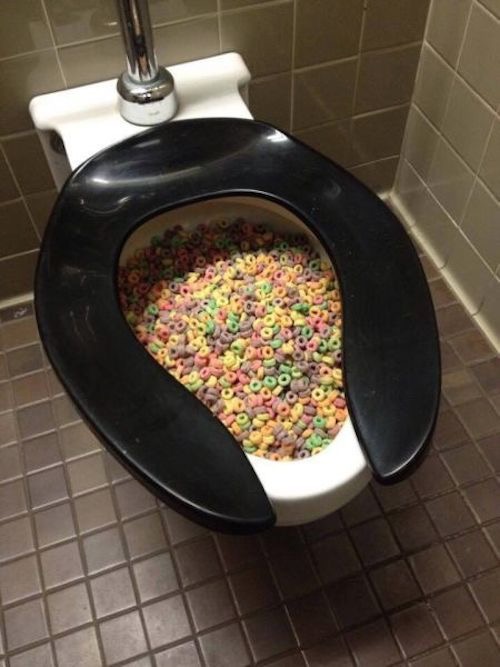Here down the page you can discover additional really good details on the subject of Flushing Food Down the Toilet?.

Intro
Many individuals are commonly confronted with the problem of what to do with food waste, especially when it concerns leftovers or scraps. One common question that occurs is whether it's okay to purge food down the commode. In this article, we'll delve into the reasons that people may take into consideration flushing food, the consequences of doing so, and alternate approaches for proper disposal.
Reasons individuals may consider purging food
Absence of recognition
Some individuals might not know the potential injury caused by purging food down the toilet. They might erroneously think that it's a safe technique.
Benefit
Flushing food down the commode might feel like a fast and simple solution to throwing away undesirable scraps, particularly when there's no nearby trash bin available.
Idleness
Sometimes, people might simply select to flush food out of sheer idleness, without considering the effects of their actions.
Repercussions of flushing food down the toilet
Environmental influence
Food waste that ends up in waterways can add to pollution and harm water ecological communities. Additionally, the water utilized to flush food can stress water resources.
Pipes issues
Flushing food can cause clogged pipes and drains, creating pricey pipes repair work and troubles.
Kinds of food that ought to not be flushed
Fibrous foods
Foods with fibrous structures such as celery or corn husks can get entangled in pipelines and cause obstructions.
Starchy foods
Starchy foods like pasta and rice can take in water and swell, causing obstructions in pipelines.
Oils and fats
Greasy foods like bacon or cooking oils should never ever be purged down the toilet as they can strengthen and cause clogs.
Proper disposal methods for food waste
Utilizing a garbage disposal
For homes equipped with waste disposal unit, food scraps can be ground up and purged with the plumbing system. Nevertheless, not all foods are suitable for disposal in this way.
Recycling
Particular food packaging materials can be reused, minimizing waste and lessening ecological effect.
Composting
Composting is a green method to get rid of food waste. Organic materials can be composted and used to improve soil for gardening.
The value of appropriate waste administration
Reducing environmental damage
Correct waste monitoring techniques, such as composting and recycling, assistance lessen pollution and maintain natural deposits for future generations.
Protecting plumbing systems
By preventing the practice of flushing food down the bathroom, property owners can protect against expensive plumbing repairs and maintain the honesty of their pipes systems.
Verdict
Finally, while it might be alluring to purge food down the commode for convenience, it is essential to understand the possible repercussions of this activity. By adopting appropriate waste administration methods and dealing with food waste responsibly, individuals can contribute to healthier plumbing systems and a cleaner atmosphere for all.
FLUSH FOOD DOWN THE TOILET?
FLUSHING FOOD CAN CAUSE BLOCKED DRAINS IN YOUR HOME
All of the plumbing fixtures in your home are connected to the same sewer pipe outside of your home. This outdoor sewer pipe is responsible for transporting all the wastewater from your home to the Council sewer mains. Even small pieces of food that go down the kitchen sink can cause problems for your sewer. It should therefore be obvious that flushing larger bits of food, such as meat, risks a clog in either the toilet itself or the sewer pipes. Flushing greasy food is even more problematic because oil coagulates when it cools, coating the interior lining of your pipes.
THE TOILET IS NOT A BIN
Food isn’t the only thing that people shouldn’t be flushing down the toilet. People use the toilet to dispose of all kinds of things such as tampons, makeup wipes, dental floss, kitty litter and even underwear. Water goes to great lengths to educate residents about the high costs and stress placed on wastewater treatment systems simply from people flushing the wrong stuff down the toilet. It costs taxpayers millions of dollars each year, and homeowners thousands in blocked drain repairs.
FLUSHING FOOD IS A WASTE OF WATER
Flushing food is a waste of our most precious resource - water. In June this year Level 1 water restrictions were introduced to protect water supply from drought conditions. Much of New South Wales continues to be affected by prolonged drought with recent figures revealing up to 97 per cent of the state remains in drought. Depending on whether you have a single or dual flush toilet, every single flush uses between five and 11 litres of water. In the current climate this is a huge amount of water to be wasting on flushing food that should be placed in the bin (or better yet, the compost).
https://www.jabplumbingsolutions.com.au/blog/can-you-flush-food-down-the-toilet

I found that page about What Can Happen If You Flush Food Down the Toilet? when scouting around the web. You should set aside a second to promote this page if you liked it. I treasure reading our article about What Can Happen If You Flush Food Down the Toilet?.
Click Here